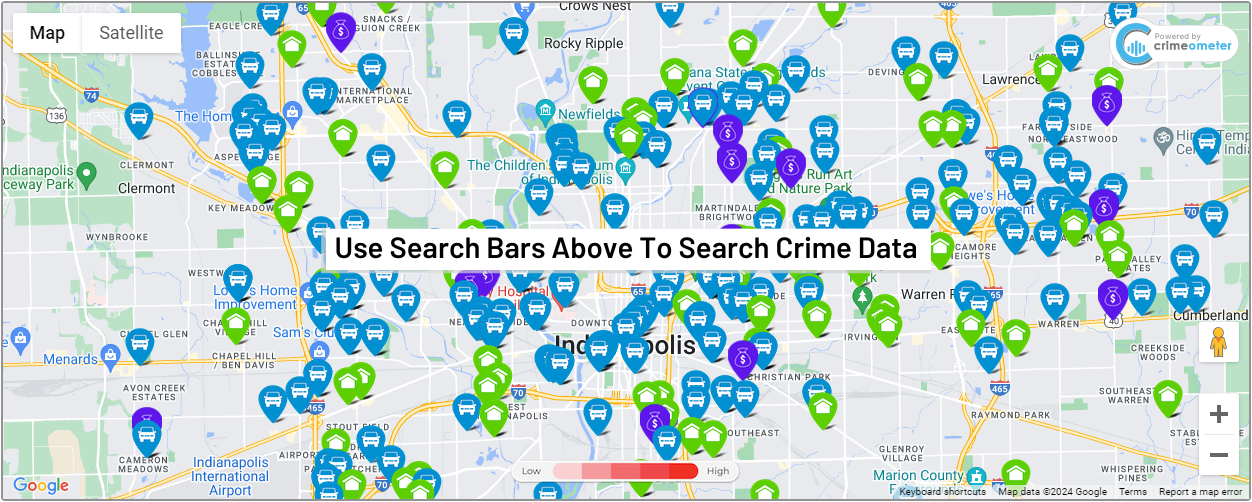Hogsett, IMPD chief highlight tech upgrades aimed at reducing, fighting crime
INDIANAPOLIS (WISH) – The mayor on Friday announced the largest investment in crime prevention in the city’s history.
Indianapolis Mayor Joe Hogsett and the chief of the Indianapolis Metropolitan Police Department talked Friday morning about technology upgrades aimed at preventing crime.
The new public safety plan contained in Hogsett’s budget calls for license-plate readers, cameras in high-crime areas, and a new gunfire-detecting system.
“By investing in modern policing technology, we’re equipping IMPD with critical tools to combat the unacceptable levels of violence in Indianapolis neighborhoods,” Hogsett said in a statement from IMPD. “These technologies represent a key piece of our larger antiviolence efforts, which include historic levels of funding for law enforcement, grassroots violence prevention, and root causes of crime. My thanks to the City-County Council for their unanimous support of the American Rescue Plan Act funding making these investments possible, and IMPD for their tireless efforts to advance public safety in our city,” Hogsett added.
“This investment will allow the department to modernize our police force and our crime fighting techniques at a scale we never have before. This technology will supplement our beat officers’ efforts and serve as another tool to track down criminals, reassure citizens and make the streets of Indianapolis safer,” said IMPD Chief Randal Taylor in the statement.
The upgrades will be placed throughout the city.
The city plans to use $150 million from the American Rescue Plan and $16 million from the the city government to finance Mayor Joe Hogsett’s crime-prevention efforts.
The city is getting 100 new cops and hundreds of new public safety cameras, and the mayor changed his mind on the use of gunshot-detection devices. Hogsett said Friday the city will start a gunshot-detection pilot program.
Indianapolis government is getting several hundred new cameras to keep an eye on the streets and people. I-Team 8 has shown the mobile and fixed cameras around the city. Chris Bailey, assistant chief of Indianapolis Metropolitan Police Department, says the cameras are an unblinking eye that have caught and recorded several crimes in progress.
“We have a problem in this city with people cooperating with investigations. We have a problem with people being scared to testify in court. The cameras are not afraid to testify in court. We have multiple incidents where cameras have helped us solve cases to prevent a human witness from having to set foot in a courtroom,” Bailey said Friday at a news conference.
Both IMPD and the mayor said the placement of these cameras will be in neighborhoods with high levels of crime, as well as neighborhoods that request them. When and where the cameras will be installed is still being worked out.
The mayor’s crime-prevention budget has $9 million for new technology, which includes several new fixed and mobile license plate readers. IMPD says these cameras can track suspect vehicles as they move through the city, and help locate cars during Amber Alert and Silver Alert announcements.
IMPD Maj. Matt Thomas said Friday during the news conference, “These devices also act as witnesses allowing us to rapidly focus resources on locating the suspect vehicle and only the suspect vehicle instead of using the former dragnet approach to canvasing.”
Meanwhile, the gunshot-detection pilot program is something the Fraternal Order of Police has asked the city to invest in for years.
Bailey said, “There are estimates that 50% to 90% of actual shots fired are not reported to police. What this technology does is automatically notifies officers in the area that there have been gunshots and pinpoints the location where those shots are possibly coming from.”
The city has hired a consultant to help with the placement of the gunshot detectors. I-Team 8 was told the gunshot detectors will cover from 4-5 square miles of the city.
Also, the Mayor is putting $45 million into community antiviolence groups, $30 million toward expansion of mental health services, and millions more to treat the root causes of violence.




